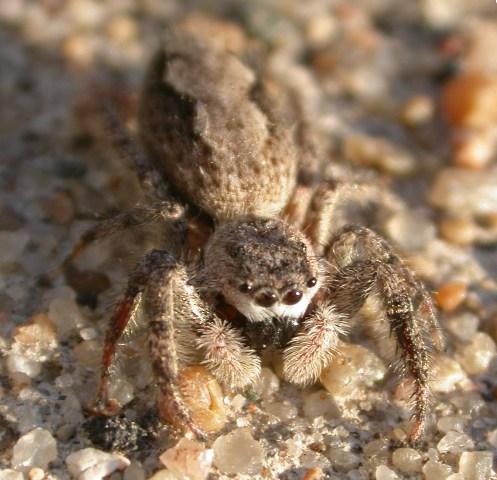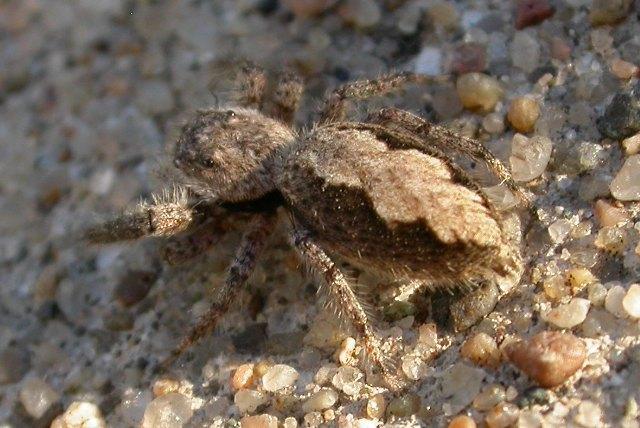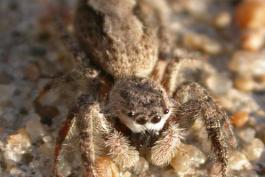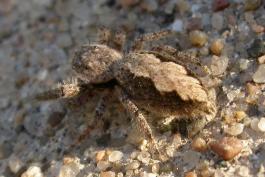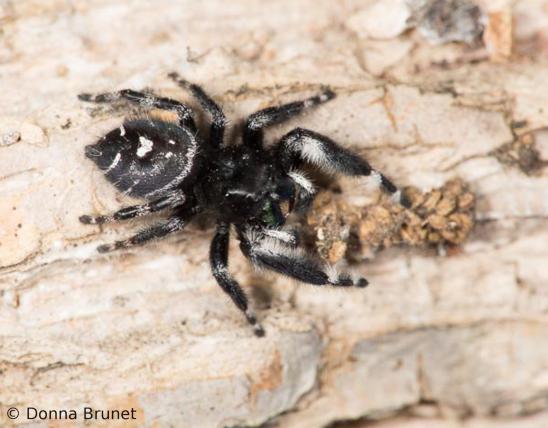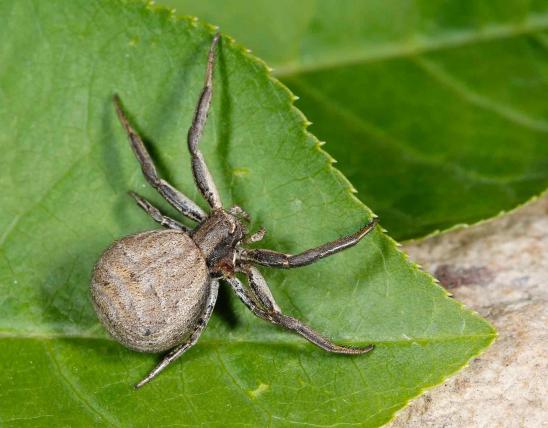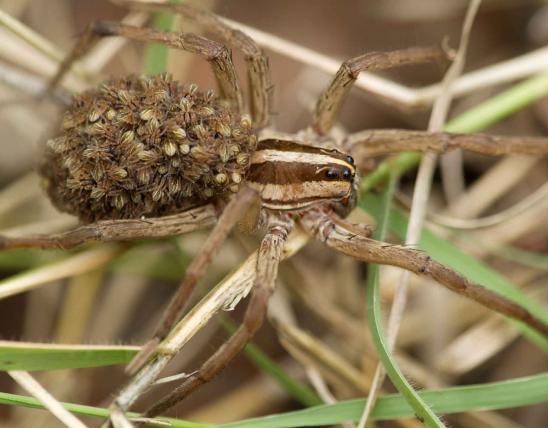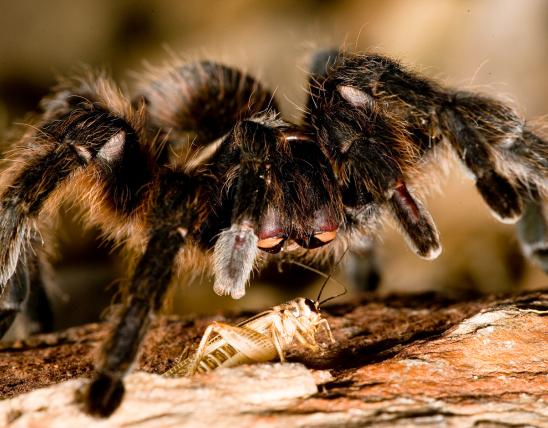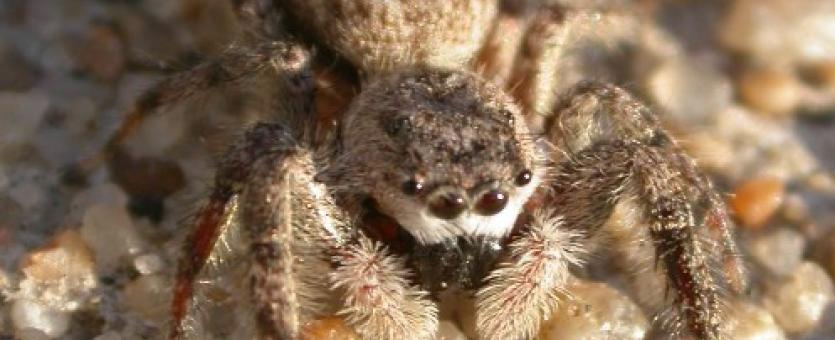
Jumping spiders, as a group, are often furry, have exceptionally keen vision (two of the eight eyes face forward and appear goggle-like), and characteristically move in a jerky gait. Most are remarkable jumpers. Silk-spinning is limited to a single "tether" line for safety when exploring or when jumping great distances, and for making cocoons to hide in and for eggs.
The tan jumping spider usually lives on tree bark and is camouflaged with grays, tans, and browns, with flecks of black, white, and sometimes reddish patches, to blend in with its background. The color pattern is quite variable. Some individuals have a zebralike look while others appear more uniformly gray. There is usually an undulating pattern on the abdomen. The bodies are rather flattened.
The pedipalps (fingerlike appendages near the face) are fuzzy and usually white. The chelicerae (fangs, often hidden behind the pedipalps) are fuzzy with long white hairs on males, and are black, shiny, and hairless on females.
Length (not including legs): to ⅝ inch (females); to ⅜ inch (males).

Statewide.
Habitat and Conservation
The tan jumping spider prefers vertical surfaces and is typically found on tree trunks (especially shagbark hickories), fence posts, and building walls. In late autumn, people often see these spiders exploring walls inside houses. In our state, they seem most common near hickory woodlands. They overwinter by hiding under bark within small silken cocoons.
Food
Foods include flies, aphids, moths, and other spiders. Jumping spiders have excellent eyesight and are visual predators. The two large eyes facing the front afford good binocular or 3D vision, while the other six eyes are positioned over the head to provide 360-degree views. Once detected, prey is generally pounced upon, grabbed, bitten, and consumed.
Status
This species is found throughout the eastern United States. Older sources call it Metacyrba undata. The "undatus/undata" species name refers to the bold, undulating pattern that usually appears on this spider's abdomen.
Life Cycle
Jumping spiders have fascinating courtship dances, where the male waves his forelegs like semaphore and usually drums on the ground in rhythmic patterns. These motions and patterns signal to females that they are not to be considered food. Eggs are laid in silken cocoons in small crevices throughout the summer. Eggs, young, and adults all can overwinter in spun cocoons under tree bark and in other tight niches.
Human Connections
This is a good spider to get to know, because it is about as cute as any spider could be. It's furry and brown, like a teddy bear with goggles, it is generally curious about humans, and it almost never bites, unless pinched. Its bite is harmless, anyway. Plus, it helps control insect populations.
Ecosystem Connections
Spiders are little predators that help to control populations of the insects they capture. Being small themselves, they easily fall prey to larger predators such as birds, reptiles, and mammals. Many animals eat their eggs. In winter, many songbirds hunt for hibernating spiders and their egg cases.
A smallish tan butterfly called the gemmed satyr has, on the outer edge of its hindwings, a grayish oval patch with two or four sharply contrasting round black spots, each highlighted with a bit of white. These apparently function as a defense against potential predators. Some observers have suggested these mimic the big, shiny, goggle-like eyes of jumping spiders, especially the tan jumping spider, which occurs in about the same range. Several kinds of predators that eat butterflies might think twice before attacking a jumping spider.
